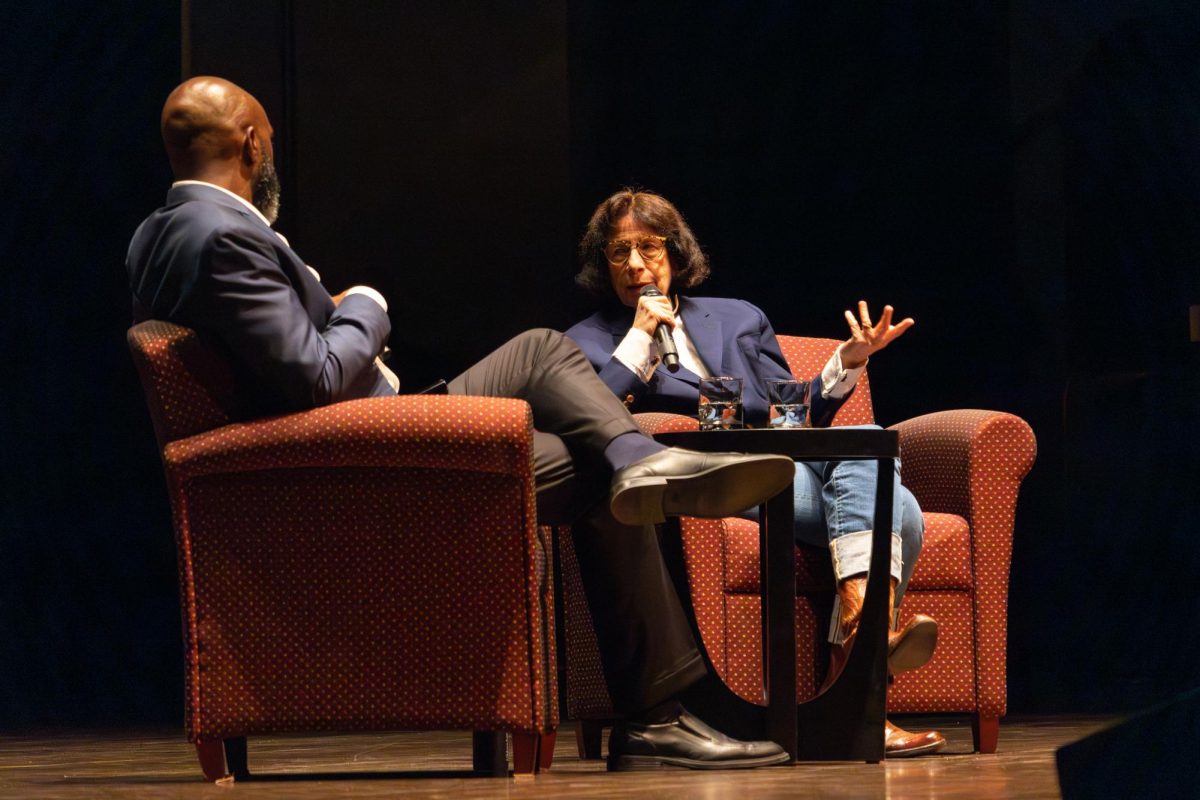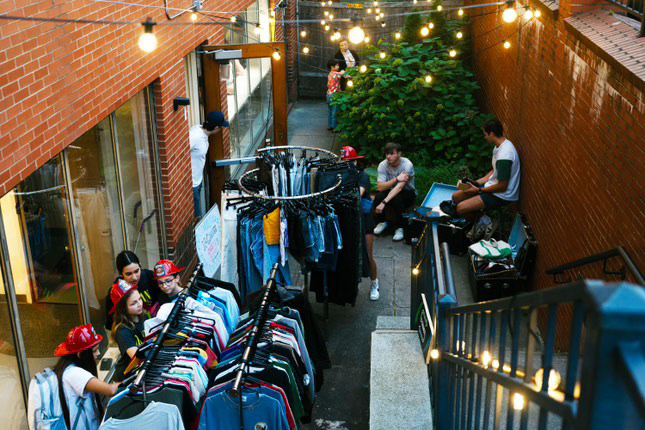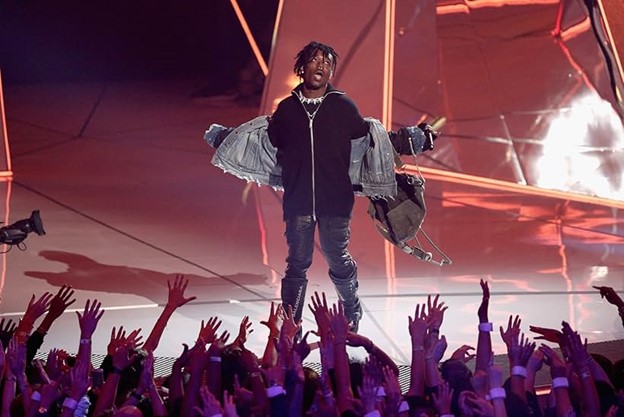
South Africa may be thousands of miles away from Amherst, Massachusetts, but thanks to a duo of multi-talented artists, its’ history and livelihood exist closer than ever in the form of dance.
Last Tuesday, the Fine Arts Center welcomed Sello Reuben Modiga and Thapelo “Mthakathi” Motloung in “The Festival of South African Dance.” The show features two distinct South African dance styles, Gumboot dance and Pantsula dance.
Motloung directs the Gumboot portion, presented as “Stimela — the Musical.” This particular style got its roots from European colonization of South Africa in the 1880s, when men were taken from rural Africa to work in the gold mines of Johannesburg.
Under the scrutiny of their bosses, and due to the hindrance of different dialects, the miners created a language of their own by slapping their rubber boots, stomping their feet and rattling their chains. This upbeat code was soon followed by singing, and with that, a bond was created which allowed them to survive harsh working conditions and a lifetime of servitude. It must be emphasized, however, that Gumboot has sustained and flourished beyond apartheid’s lowest phase, and has evolved into the full-body expressive art form that is unique to the region today.
Pantsula, which composes the second act of the show, has similar roots: Described as an expression of revolt, it originates from South Africa’s youth finding solidarity in each other amidst violent, segregated townships. Inspired by the 11 languages of the country, it is a unification of lives and people, and a re-imagining of indigenous art.
Modiga, hailing from the Orange Farm township near Johannesburg, founded Real Actions Pantsula Dance Company in 1992 when he realized the wealth of local young talent could cultivate this cultural treasure and the spirit of Ubuntu, which means humanity in Zulu.
Now choreographers and artistic directors of their own respective dance companies, Modiga and Motloung have decided that their beloved form of South African culture needs to be shown to the world, and that dance can be used as resistance.
“Stimela” is structured as a musical, featuring lead vocalist and djembe player Siyabonga Hlatswayo as protagonist Zakhele Ndlovu, a young African man brought from his hometown to mine for gold in Johannesburg.
Hlatswayo is immediate in his exuberance, smashing the fourth wall and expressing delight at the crowd before him. As a vocalist, his control is excellent and his timbre is truly a treat for the ears, slightly husky and unwavering in its richness. He stomps and sings among a cast of five dancers, all of whom are extraordinarily gifted in their athleticism.
They execute hamstring-twanging high kicks, spring to and from the floor acrobatically and syncopate their boot- and body-slapping like machines. Most impressive of all, they do this while also singing, chanting and acting, all without a single pant or gasp.
Six dancers may not instantly equate a full dance company, but if this is the level of brilliance and wondrous cacophony that they produce, I cannot even begin to imagine what a cast of 12 or 20 would do.
After the intermission, the Pantsula act takes the audience to a more contemporary time period, with a switch in backdrop. A live DJ bobs to EDM/electro-influenced music in the background throughout, five-piece band now replaced with a Mac and electronic setup. The dancers are also young African men, but instead of black rubber boots, they wear white Converse-style high-tops.
Pantsula’s setting is above-ground—an urban hubbub based on real-life South African townships. The goal here is to hustle, and to thrive. We see a group of young men purposeful and animated in their work, whether it be construction work, running a self-made car-washing business or setting up chairs for a night at a social club.
The use of sound effects and back-tracking is particularly artful in this section, and combined with the performers’ pantomime and use of props, everyday actions are elevated to choreography.
While their synchronicity is initially not as strong as Gumboots’, the performers hit their stride in the car-wash scene, as they deftly toss washcloths in the middle of spins and kicks; they shimmy over and around black plastic crates with an arresting fleet-footedness. From then on, they move together like a full-fisted punch, spry and captivating.
Where Gumboots’ emotional pacing could be tumultuous, with one scene a riotous exaltation swiftly hushing into a somber, pensive reflection, Pantsula keeps the energy consistent. Again, one can’t help but be impressed by the dancers’ verve and vigor—they seamlessly keep on top of the thumping beat, their efforts only hinted at by the shadows of sweat stains. “The South African Festival of Dance” packs more than enough to excite and invigorate, even if the runtime of over two hours is a little much for some.
The final number, no less hale and hearty than the rest of the show, is where both casts shine in their interactions with each other — a wild smile, a high holler tossed back and forth — and in playful moments of choreography, like when a pair of dancers trade smacks on the rumps. Fittingly called Gumtsula—a portmanteau of Gumboots and Pantsula—this last hurrah jubilantly mixes the best of both acts in a final stomp and shout that brings the audience to their feet.
Both Pantsula and Gumboot dance are inextricably linked to South Africa’s history of apartheid and oppression—but make no mistake, at their core, both dance styles (and by extension, “The South African Festival of Dance”) are undoubtedly products of brotherhood, tenacity and celebration. The masculinity portrayed by the performers is bound in tradition, tackling themes like labor, provision, love and strength, and it is simultaneously reinvented for a newer audience while still testing time.
The performers show both bravado, bravery and mockery as well as tenderness. Whatever the mines and streets serve to the men of South Africa, they respond with resourcefulness born of kinship and spirit. Work is hard, but they rejoice, banter, comfort and fight. Each facet that they represent is just as alive as their movement, each storyline as rich as their voices. Thanks to Modiga and Motloung, the borders of understanding between South African and American cultures can be crossed — exuberantly, optimistically and poignantly — even with the distance of physical borders.
The South African Festival of Dance will continue its international tour in locations including Columbus, Ohio; Berkeley, California; Omaha, Nebraska and Urbana, Illinois.
Sam Wong can be reached at [email protected].


















